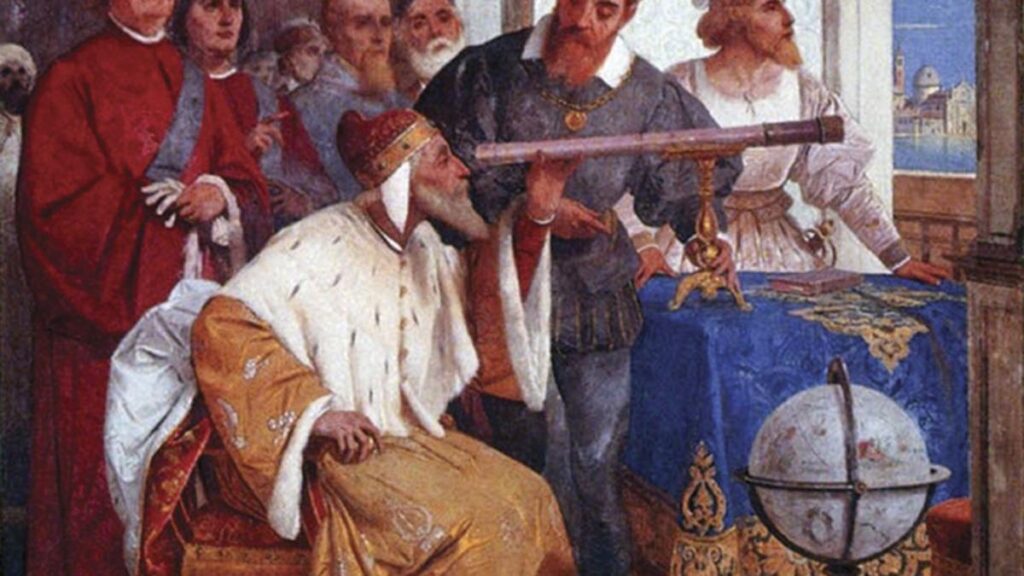Galileo Galilei – often referred to just as Galileo – is someone who often needs no introduction. An Italian astronomer, physicist, mathematician, and philosopher, Galileo was a polymath who made fundamental contributions to a number of fields. The fact that he needs no introduction nearly four centuries after his existence is testament to the work that he did.
Galileo changed the way we study motion. He backed experimentation as a means of uncovering the secrets of nature. And his discoveries with the telescope changed our understanding of the universe.
It isn’t often that discoveries that revolutionise our notion of an entire field can be traced back to one single day. And yet, this was the case with Galileo’s discovery of Jovian satellites, which took shape from January 7, 1610. Homemade telescope Astronomical changes were brewing at the end of 1609.
With the telescope having been recently invented, Galileo started playing around with it, making his own improvements to the new gadget. The result was a homemade telescope that was much more powerful. Using this telescope, Galileo peered up towards the constellation Orion on January 7, 1610.
His target was the planet Jupiter – an object brighter than the surrounding stars. To his surprise, Galileo did not see just this one object, but three other points of light as well near this planet. In Jupiter’s vicinity At first, Galileo believed these to be distant stars.
But as someone who valued observations, Galileo tracked them the following nights. Based on the understanding of nature at the time, Galileo noted that these points of light appeared to move in the “wrong direction” with regard to the background stars. Additionally, these points of light remained in and around Jupiter, even though their positions relative to each other changed.
Oil painting of Galileo | Photo Credit: WELLCOME LIBRARY, LONDON By January 13, Galileo had observed a fourth such point of light displaying the same unusual behaviour. Within the next few days, Galileo came to the correct conclusion that these points of light were not stars at all, but instead, were all moons orbiting around Jupiter. The Starry Messenger Using his celestial observations, including the discovery of Jupiter’s satellites, Galileo came up with a book titled Siderius Nuncius (The Starry Messenger) in March 1610.
In this work, Galileo mentions that “On the 7th day of January in the present year, 1610, in the first hour of the following night, when I was viewing the constellations of the heavons through a telescope, the planet Jupiter presented itself to my view, and as I had prepared for myself a very excellent instrument, I noticed a circumstance which I had never been able to notice before…” He goes on to say that “These observations also established that there are not only three, but four, erratic sidereal bodies performing their revolutions around Jupiter. ” Backs Copernican theory At a time when the dominant theory suggested that the Earth was at the centre of everything, Galileo’s discovery provided strong evidence for the Copernican theory that suggested that most celestial objects did not move around the Earth. While it wasn’t accepted immediately, heliocentrism won over eventually.
In case you are wondering about the names of these satellites, we are getting there. As the discoverer, Galileo had the rights of naming them and proposed that these be named the Medicean stars, in honour of his patron, Cosimo II de’ Medici. In his own notes, however, Galileo simply referred to them using Roman numerals I, II, III, and IV based on their distances from Jupiter.
Galilean moons While the numeral convention surely didn’t stand the test of time, these Jovian moons are still referred to as the Medicean stars in some quarters. They are more commonly referred to as the Galilean moons of Jupiter owing to the fact that they were discovered by Galileo. The four Galilean moons – Io, Europa, Ganymede and Callisto – are now four of over 90 moons of Jupiter that are officially recognised by the International Astronomical Union.
But these four will always remain special, for their discovery helped in the birth of modern astronomy. COMMents SHARE Copy link Email Facebook Twitter Telegram LinkedIn WhatsApp Reddit Related stories Magie dreams up a Monopoly.
From: thehindu
URL: https://www.thehindu.com/children/when-galileo-discovered-the-moons-of-jupiter/article67679898.ece
